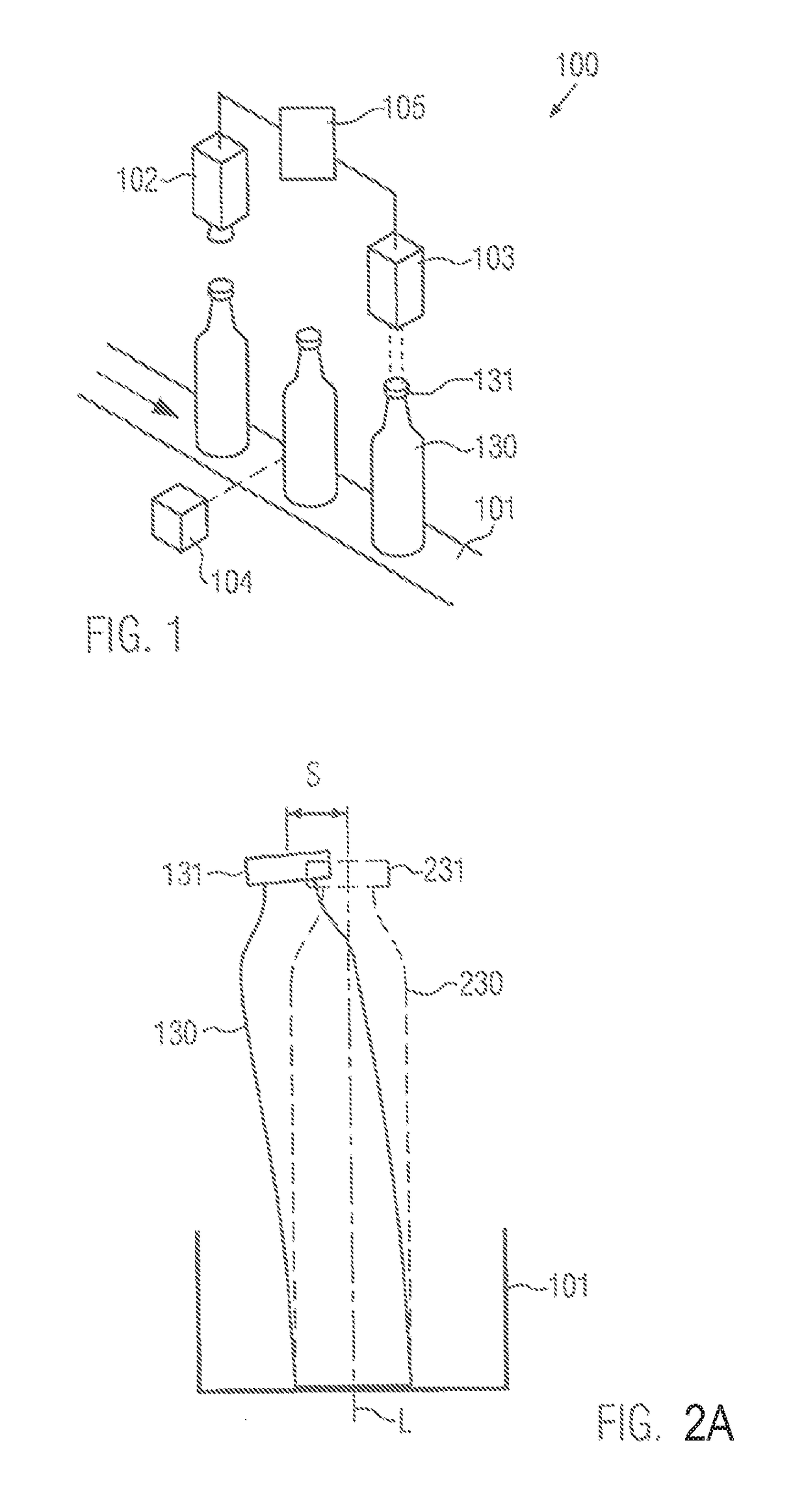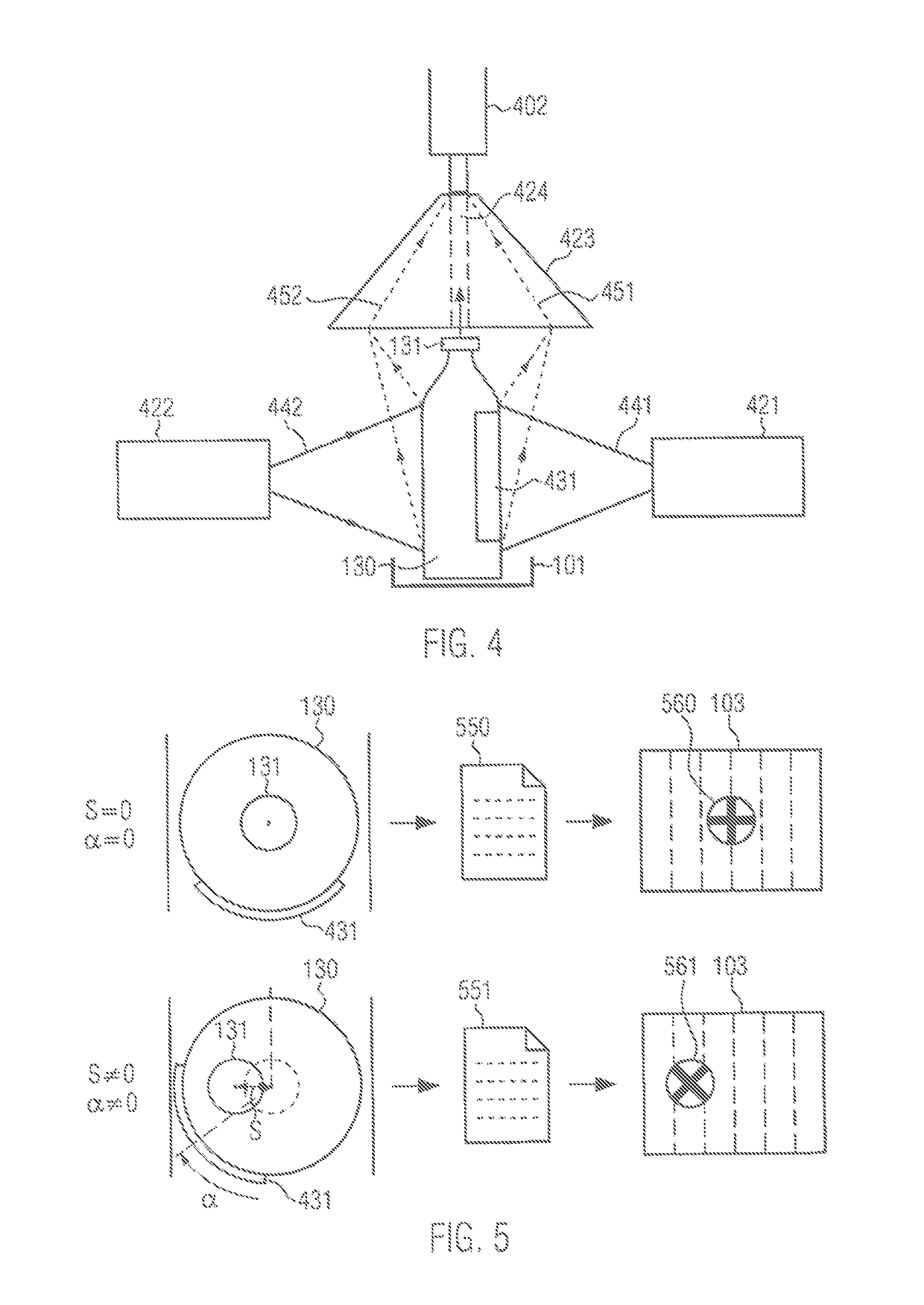Device for printing closures of closed containers
a technology for printing closures and containers, applied in typewriters, packaging, labelling machines, etc., can solve the problems of minor deviations in the shape of actual containers, containers produced are not rotationally symmetrical, and the printing of closures can be very flawed
- Summary
- Abstract
- Description
- Claims
- Application Information
AI Technical Summary
Benefits of technology
Problems solved by technology
Method used
Image
Examples
Embodiment Construction
[0035]FIG. 1 shows a device 100 for printing closures 131 of closed containers 130. The device comprises a transport section 101 in which the closed containers 130 are transported along a transport direction (arrow). Thus the transport section defines a transport direction for the containers 130. The transport section may be configured as a conveyor belt. Other embodiments, for example transportation of the containers on stands, are also conceivable. The transport section need not be made linear, but may also be provided as a part of a machine configured as a rotary machine with a plurality of container holders.
[0036]The device 100 can be part of a container treatment system for treating containers. In addition to the device 100, the container treatment system can comprise further container treatment machines, in particular a filler, a closer, and a labeling machine. All of these container treatment machines may be arranged upstream of the device 100. However, one or more may also b...
PUM
 Login to View More
Login to View More Abstract
Description
Claims
Application Information
 Login to View More
Login to View More - R&D
- Intellectual Property
- Life Sciences
- Materials
- Tech Scout
- Unparalleled Data Quality
- Higher Quality Content
- 60% Fewer Hallucinations
Browse by: Latest US Patents, China's latest patents, Technical Efficacy Thesaurus, Application Domain, Technology Topic, Popular Technical Reports.
© 2025 PatSnap. All rights reserved.Legal|Privacy policy|Modern Slavery Act Transparency Statement|Sitemap|About US| Contact US: help@patsnap.com



